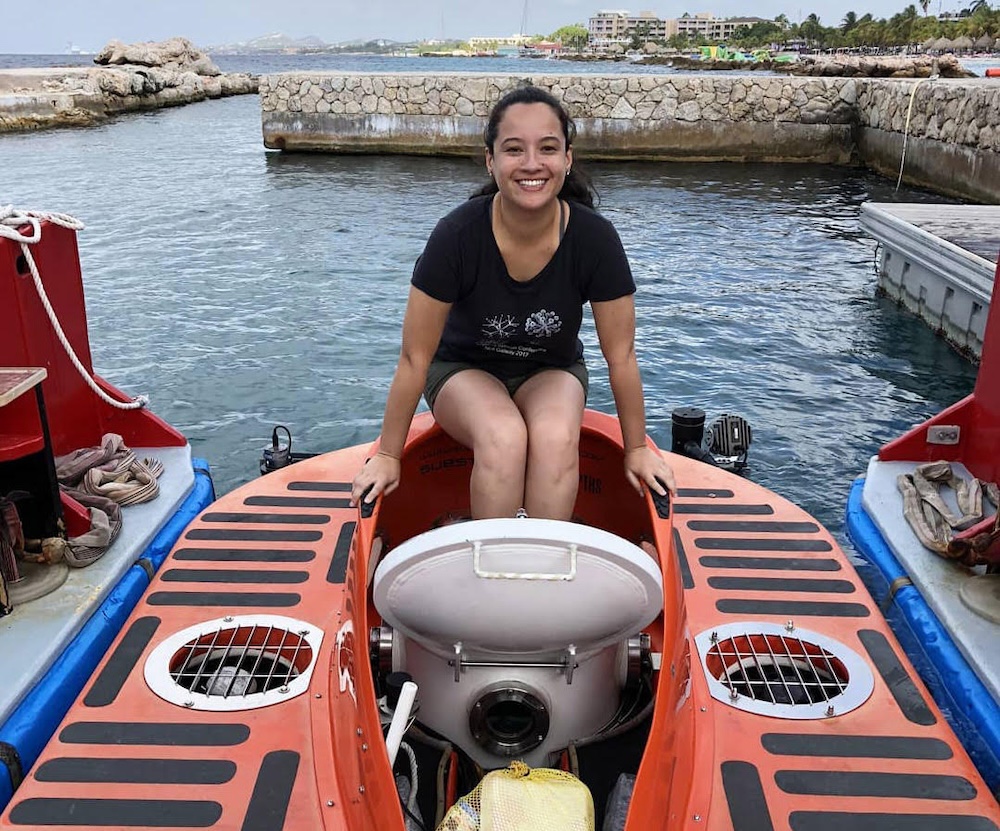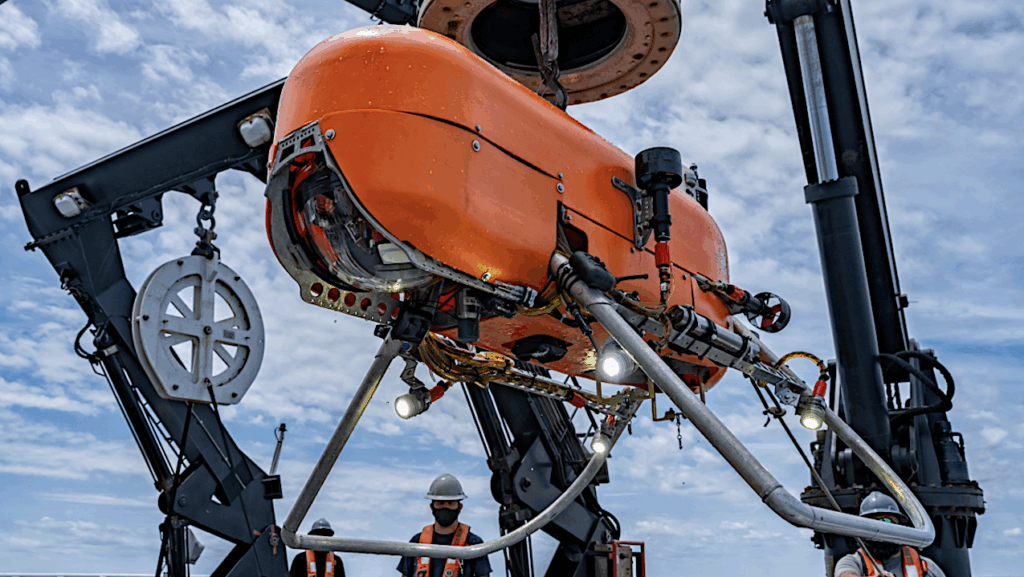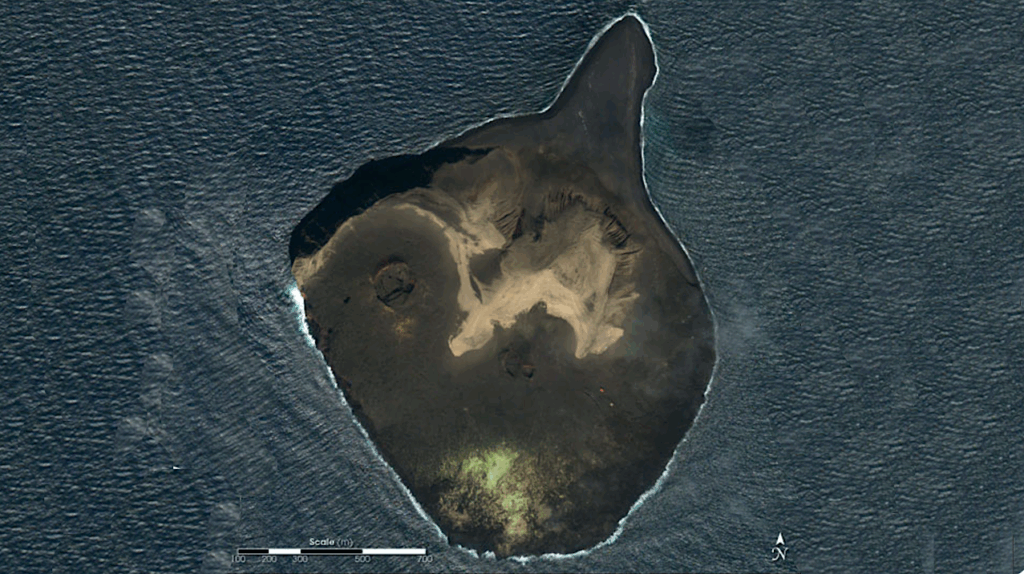Ocean Planet Exploration And Taxonomy: Naming A Strange New Species

Editor’s note: one day we will begin a detailed exploration of ocean worlds other than our own. Hopefully they will be habitable – and inhabited. Given that we still find new life forms on Earth – things which also seem strange by comparison to what has already been discovered, we have along way to go – on this world. As such it make sense to practice the skills of exploration and discover on a world close to us and our tools. In so doing we need to develop some translatable skills that we can apply to the robotic and human exploration of these other worlds. Expeditions and discoveries as describe below still happen. And the more we look, the more we discover.
This story is about the newly-named Advhena magnifica. How are we going to name the new life forms that we discover offworld? Will we use the same Latin-based binomial naming system that is used on Earth, perhaps adapt it with a new prefix or suffix, or pick another language? Or go digital? Something to think about.
Oh yes: It is fun to note that these explorers see the link to astrobiology as well: “In the case of Advhena magnifica, the shape of this sponge is reminiscent of an alien, like in the movies, with what looks like a long thin neck, an elongated head, and huge eyes. Advhena is from the Latin advena, which means alien, but in the sense of visitor, foreigner, or immigrant. Of course we, humans, were the actual visitors to the sponge’s deep-sea home when we found this “magnificent alien.” While we haven’t “officially” given it a common name in our paper, “E.T. sponge” seems to fit.”
In a paper published in 2020 , scientists identified and named a new genus and species of sponge: Advhena magnifica. It was sampled and seen during missions in the Pacific on NOAA Ship Okeanos Explorer.
On July 25, 2017, while exploring a seamount during an expedition on NOAA Ship Okeanos Explorer, a team of deep-ocean explorers came upon an extraordinary seascape. Dr. Chris Mah of the Smithsonian National Museum of Natural History (NMNH) dubbed the scene the “Forest of the Weird.” That was due to the diversity of prominent sponges rising up on stalks with their bodies oriented to face the predominant current carrying tiny food particles.
Among the different sponges within this alien-like community was one that could not be missed. Rising high on a stalk, this sponge had a body with two large holes. They’re oddly reminiscent of the large eyes of the alien from the beloved movie, E.T.: The Extra-Terrestrial.
Turns out that this wasn’t the first time that scientists exploring via Okeanos Explorer had encountered this unusual sponge. In 2016, while exploring a seamount many miles to the west near the Mariana Trench, a sample of the sponge had been collected. It was sent to the NMNH for long-term care and study by researchers, setting the stage for this exciting—and charismatic—discovery.
We caught up with Dr. Cristiana Castello Branco, a postdoctoral researcher who made the discovery of the “E.T. sponge.” She is studying under the guidance of Dr. Allen Collins, Director of the NOAA Fisheries National Systematics Laboratory located at NMNH.

Cristiana prepares to enter the human occupied vehicle, for a dive. At the time of the sponge discovery, Cristiana was a PhD student at NMNH being supervised by NOAA Fisheries’ Dr. Collins. Image courtesy of Cristiana Castello Branco.
How did you know you’d found a new type of sponge?
It is a long process between when we first see a specimen and when we can give it a name. While we know very little about deep-sea sponges, we do know they are very abundant, so chances are often good that we will find new species. But to know you found a new one, you need to analyze the skeletal elements of the sponge, called spicules, in the lab using powerful microscopes. The types of spicules and how they are organized in the body vary across different types of sponges, and the spicules are what we use to make identifications. But on top of that, we have to compare what we see to all the known species of a particular genus to find out if it is known or new to science.
For the “E.T. sponge,” I had started my studies with Allen by analyzing some specimens from the Atlantic region. I also decided to examine specimens from other parts of the world that were closely related to taxa I was describing in my thesis. Among these samples, I found a couple representatives of the glass sponge family Bolosomidae, including a big and beautiful sponge with an alien-shaped body. At first, I thought it would be a new species of Bolosoma (a genus I’d been working on during my thesis). Once I began to examine the sponge’s spicules, I realized that they were not the same as those from any known species.

Scientists used a powerful scanning electron microscope (SEM) to get the detailed image on the left of the sponge’s spicules; in the image, the spiky tips of the spicule are about 20 micrometers across. Because sponge spicules are delicate and sometimes not complete, SEM imagery is often supplemented with scientific illustration. The illustration on the right shows the same spicules, drawn by Nick Bezio. As part of the completion of his degree in Scientific Illustration at California State University, Monterey Bay, Nick did an internship with Allen at NMNH. SEM image courtesy of Cristiana Castello Branco; illustration by Nick Bezio.
How did you choose the scientific name, Advhena magnifica, for this new sponge?
The scientific name for a new animal is always Latin or Greek. We usually try to associate the name to something unique about that species, or we can honor someone, the expedition name, or a locality.
In the case of Advhena magnifica, the shape of this sponge is reminiscent of an alien, like in the movies, with what looks like a long thin neck, an elongated head, and huge eyes. Advhena is from the Latin advena, which means alien, but in the sense of visitor, foreigner, or immigrant. Of course we, humans, were the actual visitors to the sponge’s deep-sea home when we found this “magnificent alien.” While we haven’t “officially” given it a common name in our paper, “E.T. sponge” seems to fit.

Like all biologic samples collected during Okeanos Explorer expeditions, the “E.T. sponge” collected in 2016 was archived in the collections of the National Museum of Natural History, Smithsonian Institution. In this image of the collected sample, the two holes of the sponge that give it an alien appearance are clearly visible. These holes, termed oscules, serve as openings out of which the sponge pumps water. The sponge is covered in even tinier pores where the water is drawn into the sponge. Bacteria and other small prey are captured in small chambers and the water is pumped out through a complex of canals and ultimately straight out of the oscules. Image courtesy of NMNH.
What is the significance of discovering a new genus and species?
Discovering new species of deep-sea sponges is fairly common, and while the group is very diverse, we still know very little about it. We don’t even know how many species we still have to discover in the deep ocean, but it is a big number. So, chances for new discoveries are good.
When we find a new genus or species, we are helping to describe our planet’s marine biodiversity. That term refers to the variety of living organisms in the ocean, from bacteria and fungi to invertebrates and fish, all the way to marine mammals and birds. All of these organisms are intricately connected. By documenting and describing marine biodiversity, we are building a better understanding of life and the impact of humans on Earth (in this case, in the ocean).
Also, a description of a new genus just emphasizes how little we know about the deep sea and deep-sea sponges.
What role does the newly discovered sponge play in the ecosystem?
Sponges are one of the most diverse and abundant groups of organisms on the bottom of the ocean, and they have huge impacts in the marine ecosystem. Many are large and provide structure in and around which other organisms live. Sponges are filter-feeding animals capable of maintaining the balance of micro flora and fauna and have important roles in transforming nitrogen and carbon in the ocean. As sessile (attached) animals, they defend themselves by producing chemical compounds that may be useful in treating human diseases. As such, the study of deep-sea sponge biodiversity provides a necessary basis for future environmental management decisions as well as bio-prospecting studies.
How did you get into this line of work? Do you have any advice for young people interested in being a zoologist who discovers new species?
When I was an undergrad, I started to work with sponges as an intern at Universidade Federal da Bahia in Brazil. It was an opportunity to work on the scientific collection of the university, and I fell in love with sponges then. After that, I followed with a master’s degree and then I studied deep-sea sponges during my Ph.D. work at Museu Nacional, Universidade Federal do Rio de Janeiro.
As for advice for young people, apply for internships and try to figure out what most gets your attention and love. It is not that easy, but as long as you are doing what you really enjoy, it is worth it.
Astrobiology, Oceanography,








